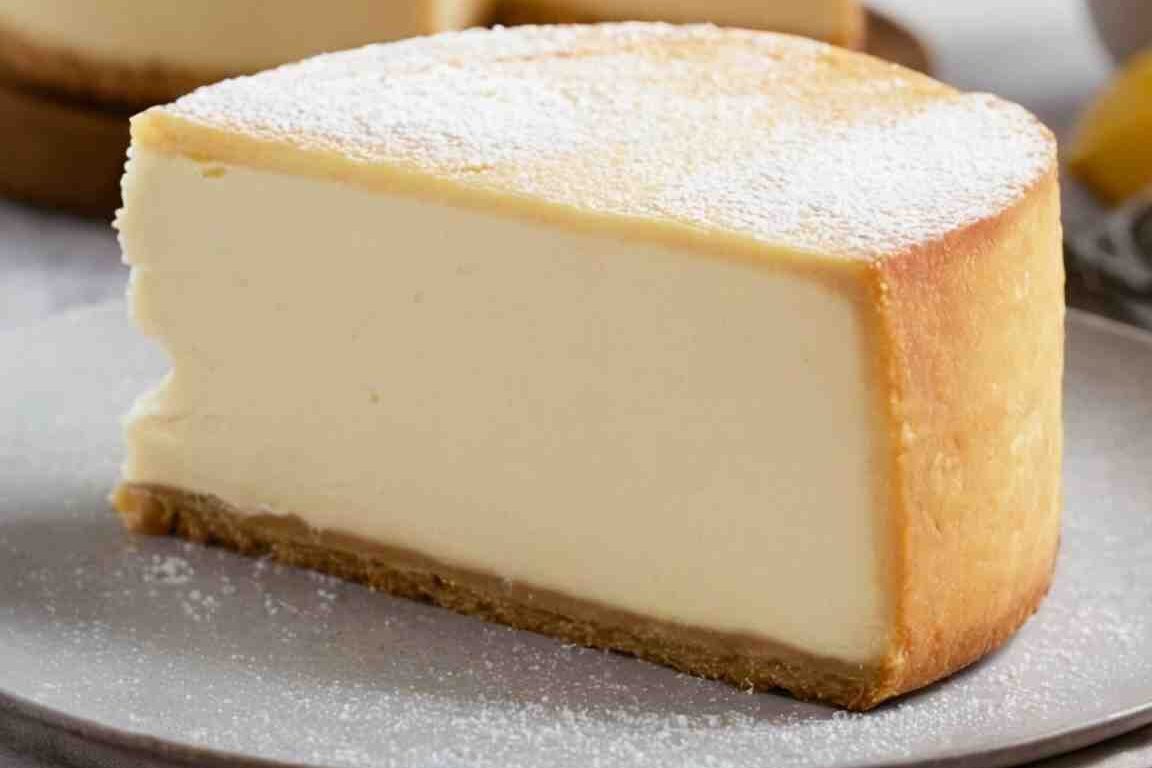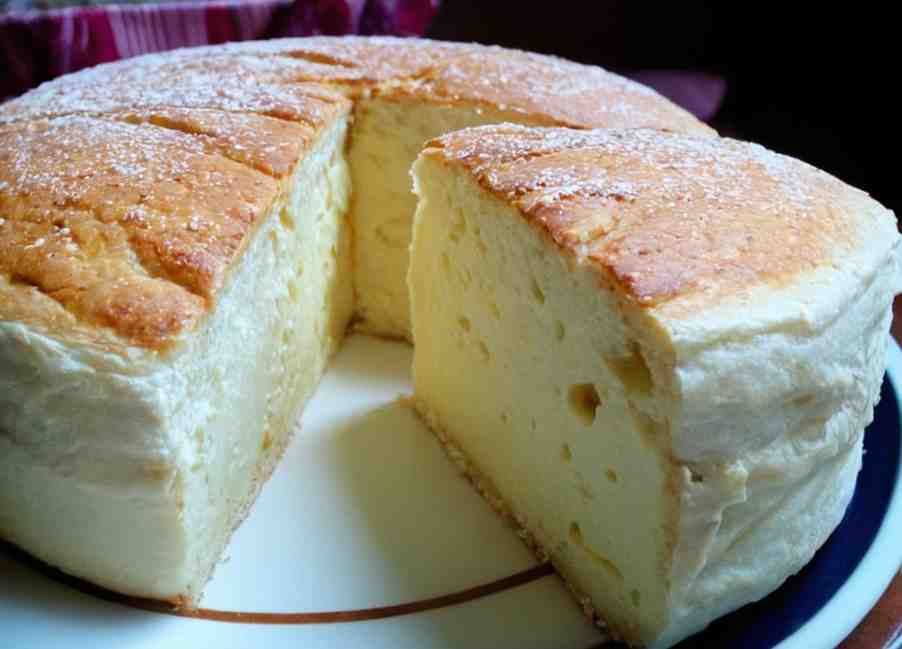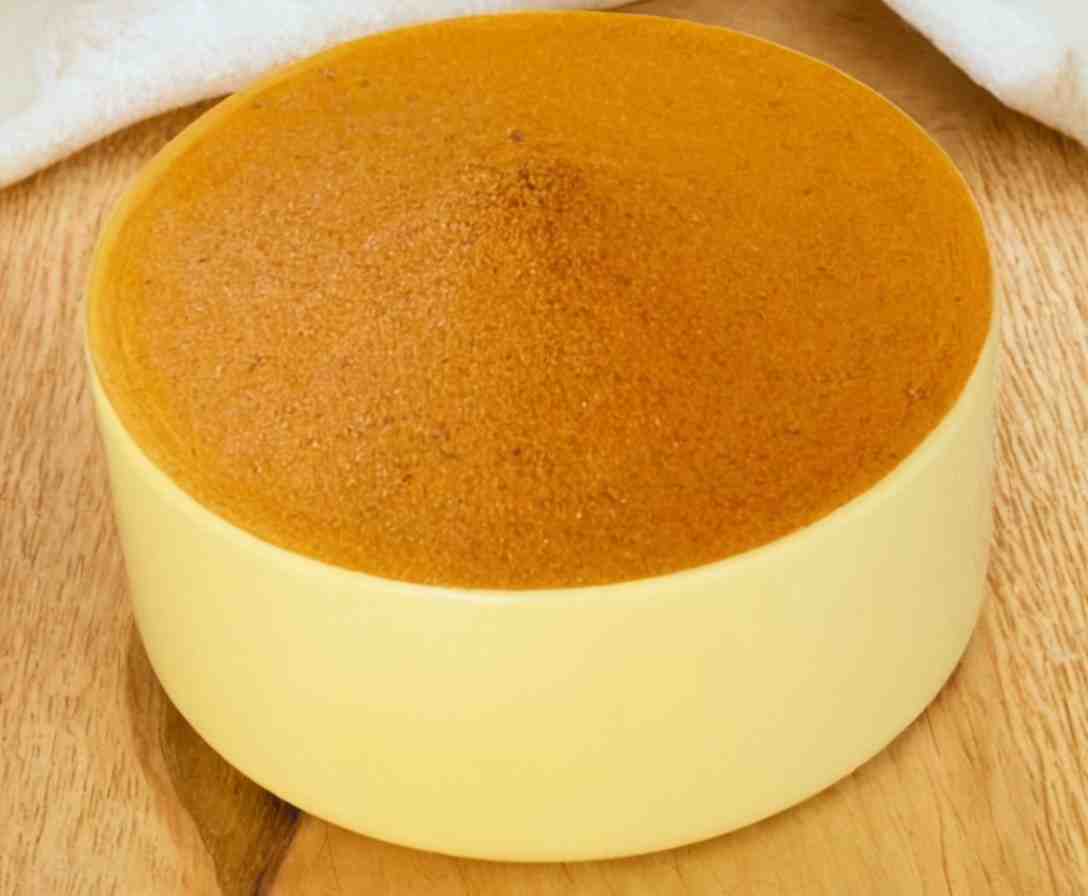Uncle Tetsu’s Japanese Cheesecake has taken the world by storm, captivating dessert lovers with its soft, fluffy texture and mild sweetness. Unlike the dense New York-style cheesecakes, this Japanese version is light and airy, almost like a souffle. Originating in Japan, Uncle Tetsu’s cheesecake has since gained a global following, with bakeries popping up in major cities worldwide. In this part, we’ll explore the origins of this beloved cheesecake, the key ingredients used, and the specific techniques that make it so unique.
The Origins of Uncle Tetsu’s Cheesecake
Uncle Tetsu’s story began in 1990 when Tetsushi Mizokami opened his first bakery in Fukuoka, Japan. His goal was to create a cheesecake that combined the lightness of a souffle with the richness of a traditional cheesecake. Over time, the bakery became famous for this unique dessert, and soon, Uncle Tetsu’s cheesecake became synonymous with fluffy, melt-in-your-mouth goodness.
Global Expansion
As word spread, Uncle Tetsu’s Japanese Cheesecake began attracting long lines of eager customers. The bakery expanded to other parts of Asia, and eventually, to cities across North America, Australia, and Europe. Today, people around the world line up for hours just to get a taste of this freshly baked cheesecake.
Key Ingredients in Uncle Tetsu’s Cheesecake
Although the ingredients for Uncle Tetsu’s Japanese cheesecake are simple, the secret lies in how they are combined and treated. These ingredients come together to create the perfect balance of flavor and texture.
Essential Ingredients
- Cream Cheese: Provides a creamy base without the heaviness found in New York-style cheesecakes.
- Eggs: Separated into yolks and whites, eggs are crucial for the cake’s structure. The yolks add richness, while the whipped whites contribute to the fluffiness.
- Butter and Milk: These add moisture, ensuring the cake stays soft and smooth.
- Sugar: Used sparingly to maintain a mild sweetness that complements the light texture.
- Flour and Cornstarch: These help give the cake structure, ensuring it holds its shape while staying soft and tender.

Achieving the Perfect Fluffy Texture
The standout feature of Uncle Tetsu’s Japanese cheesecake is its soft, jiggly texture. Achieving this unique consistency requires attention to detail and the right techniques.
Whipping the Egg Whites
The key to the cake’s light texture lies in the whipped egg whites. By beating them to stiff peaks, you introduce air into the batter, which helps the cake rise during baking and gives it an airy consistency.
- Tip: Avoid overbeating the egg whites, as this can result in a stiff batter that won’t rise properly.
- Pro Tip: Gently fold the whipped egg whites into the batter using a spatula, ensuring that the air bubbles stay intact. This helps maintain the cake’s characteristic fluffiness.
Baking with a Water Bath
Another critical technique is baking the cheesecake in a water bath (bain-marie). This method ensures even heat distribution and prevents the cheesecake from cracking.
- Why It Works: The steam from the water bath keeps the oven moist, which helps the cake bake slowly and evenly. This prevents the cake from drying out and creates a smooth, silky texture.
- Tip: Wrap the bottom of the cake pan in aluminum foil to prevent water from seeping in during the baking process.
Step-by-Step Recipe for Uncle Tetsu’s Cheesecake
Now, let’s go through the steps to make Uncle Tetsu’s Japanese cheesecake at home. With a bit of practice, you can achieve the same fluffy texture and delicate flavor that the bakery is famous for.
Ingredients:
- 200g cream cheese
- 50g unsalted butter
- 100ml whole milk
- 60g sugar (divided into two portions)
- 3 large eggs (separated)
- 40g all-purpose flour
- 20g cornstarch
- 1 tsp lemon juice
- Powdered sugar (for dusting)
Preparation Steps:
1. Preheat the Oven
Set your oven to 320°F (160°C). Line an 8-inch round cake pan with parchment paper to prevent sticking.
- Tip: Use a pan with tall sides to allow the cheesecake to rise without overflowing.
2. Melt the Cream Cheese and Butter
In a heatproof bowl over simmering water, melt the cream cheese, butter, and milk. Stir until smooth and fully combined, then remove the bowl from the heat and let it cool.
- Pro Tip: Melting the cream cheese slowly over low heat prevents curdling and ensures a smooth consistency.
3. Sift the Dry Ingredients
Sift the flour and cornstarch into the cooled cream cheese mixture, stirring gently to avoid lumps.
- Tip: Sifting prevents clumps from forming and ensures a silky batter.
4. Separate and Whip the Egg Whites
In a clean bowl, beat the egg whites until they form soft peaks. Gradually add 30g of sugar and continue beating until stiff peaks form.
- Tip: Ensure the mixing bowl is free of grease, as any fat can prevent the egg whites from whipping properly.
5. Mix the Egg Yolks
In a separate bowl, whisk the egg yolks with the remaining 30g of sugar until pale and slightly thickened. Then, gently stir the egg yolk mixture into the cream cheese batter.
- Tip: Make sure the cream cheese mixture has cooled enough before adding the egg yolks to prevent curdling.
6. Fold in the Egg Whites
Gently fold the whipped egg whites into the cream cheese batter. Be careful not to deflate the air bubbles, as this will affect the cake’s ability to rise.
- Pro Tip: Use a figure-eight motion when folding the egg whites to preserve the batter’s airiness.
7. Set Up the Water Bath
Pour the batter into the prepared cake pan, then place the pan into a larger baking dish. Fill the larger dish with hot water, making sure the water reaches halfway up the sides of the cake pan.
- Tip: Boil the water before adding it to the pan for quicker steam generation.
8. Bake the Cheesecake
Bake for 50-60 minutes, or until the top of the cheesecake is golden brown and the center is set. To check for doneness, insert a toothpick into the middle of the cake—it should come out clean.
- Tip: Avoid opening the oven door frequently, as this can cause temperature fluctuations that affect the cake’s rise.
9. Cool the Cheesecake Gradually
Turn off the oven and leave the cheesecake inside with the door slightly ajar. Allow it to cool gradually for 10-15 minutes before removing it from the oven.
- Tip: This prevents the cheesecake from deflating or cracking due to sudden temperature changes.
10. Serve and Enjoy
Once the cheesecake has cooled completely, dust the top with powdered sugar and serve. Enjoy the cake warm for a soft, custard-like texture, or chill it for a firmer bite.
- Serving Suggestion: Add fresh fruit or a drizzle of honey to complement the mild sweetness of the cheesecake.

Global Popularity: What Makes It Stand Out?
Uncle Tetsu’s cheesecake didn’t gain international fame by accident. Several unique factors help explain why this dessert has captured hearts globally.
Key Reasons for Popularity:
- Light Texture: The airy, almost cloud-like consistency makes it easy to eat and enjoy without feeling heavy.
- Mild Sweetness: Compared to richer cheesecakes, the subtle sweetness and balanced flavor make it a dessert that appeals to a wider range of taste preferences.
- Freshly Baked: Uncle Tetsu’s stores bake their cheesecakes fresh daily, often serving them still warm, which enhances their appeal.
- Visual Appeal: The cake’s signature “jiggle” has made it a viral hit on social media platforms like Instagram and TikTok, adding to its worldwide allure.
How Does Uncle Tetsu’s Cheesecake Compare to Other Cheesecakes?
There are countless types of cheesecakes around the world, each with its own unique texture, flavor, and baking style. Uncle Tetsu’s Japanese cheesecake, however, stands out in several ways when compared to traditional varieties like New York-style cheesecakes.
Japanese Cheesecake vs. New York Cheesecake
Texture
- Uncle Tetsu’s Japanese Cheesecake: Soft, light, and airy—almost like a souffle. The whipped egg whites give it a fluffy texture that melts in your mouth.
- New York Cheesecake: Dense, rich, and creamy. New York cheesecakes are much heavier, often made with full-fat cream cheese and eggs, giving them a thick consistency.
Flavor
- Uncle Tetsu’s Japanese Cheesecake: Subtle and mild. It’s lightly sweetened, allowing the natural flavor of cream cheese to shine without being too overpowering.
- New York Cheesecake: Rich and decadent. New York cheesecake is known for its intense, tangy cream cheese flavor and sweet graham cracker crust.
Baking Method
- Uncle Tetsu’s Japanese Cheesecake: Baked using a water bath (bain-marie), which provides gentle, even heat. This method ensures a smooth texture and helps prevent cracks.
- New York Cheesecake: Typically baked at high heat without a water bath. This leads to a firmer texture and sometimes results in a cracked surface, which is often covered with toppings.
Caloric Content
- Uncle Tetsu’s Japanese Cheesecake: Lower in calories due to the use of fewer fats like cream cheese and butter. The whipped egg whites also contribute to its lighter nature.
- New York Cheesecake: Higher in calories due to the heavy use of cream cheese, eggs, and sometimes even sour cream or heavy cream.
Nutritional Profile and Serving Suggestions
While Uncle Tetsu’s cheesecake feels light and fluffy, it’s still a rich treat. However, it’s often considered a lighter option compared to other cheesecakes.
Nutritional Breakdown:
- Calories: A slice typically contains around 200-250 calories, making it a lighter choice compared to denser cheesecakes.
- Fat Content: The fat content is lower than traditional cheesecakes due to the minimal use of butter and cream cheese.
- Protein: Eggs provide a source of protein, helping give the cake its structure.
How to Serve:
- Warm: Enjoying the cheesecake warm from the oven offers a soft, almost custard-like experience. The cake feels light and creamy, making it ideal for immediate consumption.
- Chilled: Chilling the cake gives it a slightly firmer texture, making it more like a traditional cheesecake. This option works well if you prefer a denser bite.
- With Toppings: Add a fresh fruit topping like strawberries or a dusting of powdered sugar for extra flavor. Honey or whipped cream also complement the subtle sweetness of the cheesecake.
FAQs: Frequently Asked Questions About Uncle Tetsu’s Cheesecake
Can I Freeze Uncle Tetsu’s Cheesecake?
Yes, Uncle Tetsu’s cheesecake can be frozen. To maintain its fluffy texture, wrap it tightly in plastic wrap and aluminum foil before freezing. It can last for up to one month. Thaw it overnight in the refrigerator and bring it to room temperature before serving.
How Long Can I Store It in the Fridge?
Uncle Tetsu’s cheesecake can be stored in the refrigerator for up to three days. For the best texture, reheat it slightly before serving or allow it to come to room temperature.
Is Uncle Tetsu’s Cheesecake Gluten-Free?
No, Uncle Tetsu’s cheesecake contains flour, which means it is not gluten-free. However, some bakeries offer gluten-free variations or recipes.
What Is the Jiggle All About?
The signature “jiggle” of Uncle Tetsu’s cheesecake is a result of its soft, souffle-like texture. This comes from the whipped egg whites and water bath baking technique, giving it a bouncy, almost wobbly consistency that has become famous.
The Unique Qualities of Uncle Tetsu’s Cheesecake
Uncle Tetsu’s Japanese Cheesecake is more than just a dessert—it’s a carefully crafted product of specific techniques and simple, high-quality ingredients. Its uniqueness lies in how it combines various elements to create something new and delightful.
What Makes It Unique?
- Whipped Egg Whites: The use of whipped egg whites is what gives the cheesecake its airy, fluffy texture. This is a major departure from traditional cheesecakes, where eggs are used to thicken the batter.
- Water Bath Baking: The water bath method creates a moist environment that allows the cake to bake slowly and evenly, ensuring it doesn’t dry out or crack.
- Delicate Sweetness: The mild flavor makes it perfect for those who prefer less sweet desserts, while still delivering the creamy taste of cheesecake.
- Universal Appeal: Its lightness and balanced flavor profile make it accessible to people with varying tastes, from those who prefer rich desserts to those who enjoy lighter, more subtle flavors.

